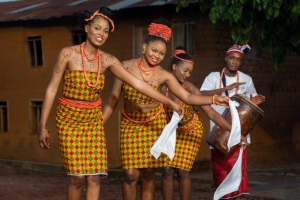Introduction
When traveling to Madagascar, understanding the local currency, payment options, and money management tips is essential for a smooth trip. The country relies heavily on cash transactions, and access to banking services can be limited in rural areas. Here’s everything you need to know about handling money in Madagascar.
1. The Malagasy Ariary (MGA) – Madagascar’s Currency
Madagascar’s official currency is the Malagasy Ariary (MGA). Unlike many other currencies, the Ariary is not divisible by 100, as 1 Ariary = 5 Iraimbilanja (a subunit rarely used today).
💰 Key facts about the Malagasy Ariary:
- Currency code: MGA
- Symbols: Ar or MGA
- Common banknotes: 100, 200, 500, 1,000, 2,000, 5,000, 10,000, and 20,000 MGA
- Common coins: 1, 2, 5, 10, 20, 50, 100 Ariary
🚀 Pro Tip: The largest note (20,000 MGA) is often difficult to break in small shops, so carry smaller denominations for daily expenses.
2. Currency Exchange & Where to Get Malagasy Ariary
Exchanging money is straightforward in major cities, but access is limited in remote areas.
📍 Where to Exchange Money:
✅ Banks & Official Exchange Bureaus (Bureau de Change) – Best rates and most reliable service.
✅ Airports (Antananarivo International Airport) – Convenient but slightly lower exchange rates.
✅ ATMs – Available in major cities but often have withdrawal limits.
🚫 Avoid street money changers, as scams and counterfeit notes are common.
🚀 Pro Tip: Exchange only what you need, as Ariary cannot be exchanged outside Madagascar—convert leftover cash before departing.
3. Using ATMs & Credit Cards in Madagascar
ATMs are available in larger cities, but they can be unreliable in rural areas.
🏧 ATM Availability & Tips:
✅ Major Banks with ATMs: BNI Madagascar, BOA Madagascar, BFV-SG, and MCB
✅ Most ATMs accept Visa, Mastercard, and Maestro cards.
✅ ATM Withdrawal Limits: Often capped at 400,000–600,000 MGA per transaction (~$90–$140 USD).
✅ Some ATMs charge fees—check with your bank before withdrawing.
💳 Credit Card Usage:
- Credit cards (Visa & Mastercard) are accepted at high-end hotels, large restaurants, and some tour operators.
- Small businesses, markets, and local transport only accept cash.
🚀 Pro Tip: Always carry cash as a backup, as power outages and ATM malfunctions are common.
4. How Much Cash Should You Carry?
Since Madagascar is a cash-based economy, it’s essential to carry enough cash for daily expenses, especially in rural areas.
💰 Estimated Daily Expenses:
💲 Budget Travelers: $20–$40 USD (local transport, meals, budget accommodation)
💰 Mid-Range Travelers: $50–$100 USD (private taxis, better meals, mid-range hotels)
🌟 Luxury Travelers: $150+ USD (high-end dining, guided tours, luxury resorts)
🚀 Pro Tip: Split your cash into different pockets or bags for security.
5. Tipping Culture in Madagascar
Tipping is not mandatory but is greatly appreciated in the service industry.
💵 General Tipping Guidelines:
- 🏨 Hotel Staff: 2,000–5,000 MGA per service
- 🍽️ Restaurants: 5–10% of the bill if no service charge is included
- 🚕 Taxi Drivers: Rounding up the fare is appreciated
- 🏞️ Tour Guides: 10,000–30,000 MGA per day (depending on service quality)
🚀 Pro Tip: Always tip in Ariary, as foreign currency is difficult for locals to exchange.
6. Bargaining & Shopping in Madagascar
Bargaining is a common practice in markets and with street vendors.
🛍️ Where to Bargain:
✅ Local markets (souvenirs, crafts, and food items)
✅ Taxi fares (except metered taxis)
✅ Tour prices (for private excursions)
🚀 Pro Tip: Be polite and friendly when bargaining—it’s part of the culture, but excessive haggling may be seen as disrespectful.
7. Can You Use Foreign Currency in Madagascar?
- US Dollars (€ and USD are sometimes accepted at hotels & tour agencies).
- Euros (€) are more commonly accepted than USD—especially for major transactions.
- Always carry Ariary for local transactions, as foreign currency is not widely accepted in small businesses.
🚀 Pro Tip: If paying in foreign currency, confirm the exchange rate before making a transaction.
8. Safety Tips for Handling Money in Madagascar
💡 To avoid theft and scams, follow these safety tips:
✅ Use a money belt to keep your cash hidden.
✅ Withdraw money during daylight hours from ATMs inside banks or shopping centers.
✅ Avoid flashing large sums of cash in public places.
✅ Double-check your change when making transactions.
✅ Keep emergency cash in a separate location from your main wallet.
🚀 Pro Tip: If you’re traveling to remote areas, withdraw enough cash in major cities beforehand.
Final Thoughts: Be Prepared & Travel Smart!
Handling money in Madagascar requires some planning, but with the right approach, you’ll have a hassle-free experience.
✅ Bring cash for rural areas
✅ Use ATMs in cities but have a backup plan
✅ Bargain respectfully at markets
✅ Always tip in Ariary








